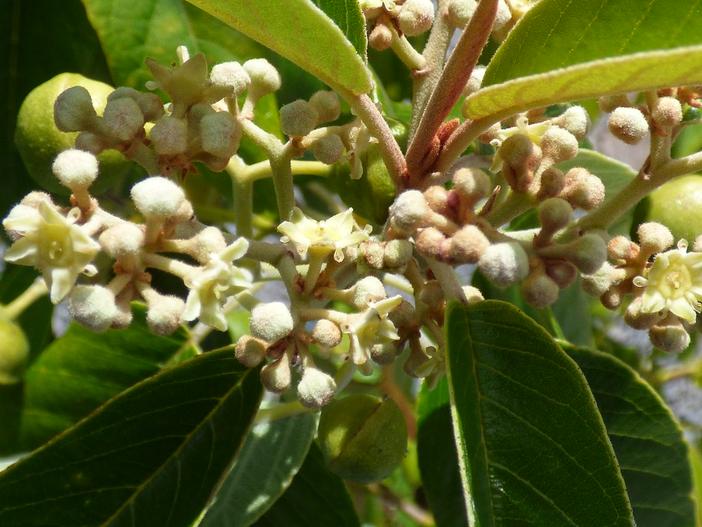Kauila
(Alphitonia ponderosa)
Kauila (Alphitonia ponderosa)
/
/

Forest and Kim Starr
CC BY 2.0
Image By:
Forest and Kim Starr
Recorded By:
Copyright:
CC BY 2.0
Copyright Notice:
Photo by: Forest and Kim Starr | License Type: CC BY 2.0 | License URL: https://creativecommons.org/licenses/by/2.0/ | Uploader: Starr Environmental | Publisher: Flickr























Estimated Native Range
Summary
Alphitonia ponderosa, commonly known as kauila, is a slow-growing, deciduous tree endemic to the Hawaiian Islands. It is typically found in dry, coastal mesic, and mixed mesic forests at elevations of 240 to 1,250 meters (787-4101 feet). Kauila trees can reach heights of 15 to 24 meters (49-79 feet) with a trunk diameter of up to 61 centimeters (24 inches). The bark is smooth and gray, and the tree is known for its dense, reddish-brown wood, which was highly valued by Native Hawaiians for making tools and weapons.
Kauila is appreciated for its durable wood and cultural significance. It is often used in reforestation projects and as a specimen tree in Hawaiian landscapes. In cultivation, kauila requires well-drained soils and can tolerate a range of light conditions from full sun to partial shade. It is drought-tolerant once established, making it suitable for xeriscaping. Despite its beauty and utility, kauila is considered vulnerable by the IUCN due to threats from invasive species, wildfire, and habitat fragmentation. Its rarity makes it a less common choice for widespread cultivation, but it is valued in conservation and native plant gardens.CC BY-SA 4.0
Kauila is appreciated for its durable wood and cultural significance. It is often used in reforestation projects and as a specimen tree in Hawaiian landscapes. In cultivation, kauila requires well-drained soils and can tolerate a range of light conditions from full sun to partial shade. It is drought-tolerant once established, making it suitable for xeriscaping. Despite its beauty and utility, kauila is considered vulnerable by the IUCN due to threats from invasive species, wildfire, and habitat fragmentation. Its rarity makes it a less common choice for widespread cultivation, but it is valued in conservation and native plant gardens.CC BY-SA 4.0
Plant Description
- Plant Type: Tree
- Height: 15-25 feet
- Width: 20-30 feet
- Growth Rate: Moderate
- Flower Color: Green, White
- Flowering Season: Spring, Summer, Fall, Winter
- Leaf Retention: Evergreen
Growth Requirements
- Sun: Full Sun, Part Shade
- Water: Low, Medium
- Drainage: Medium, Fast
Common Uses
Bird Garden, Drought Tolerant, Low Maintenance
Natural Habitat
Dry, coastal mesic, and mixed mesic forests at elevations of 240 to 1,250 meters in the Hawaiian Islands
Other Names
Common Names: Kauila, Molokai kauila
Scientific Names: , Alphitonia ponderosa, Alphitonia ponderosa var. auwahiensis, Alphitonia ponderosa var. costata, Alphitonia ponderosa var. grandifolia, Alphitonia ponderosa var. kauila, Alphitonia ponderosa var. lanaiensis,
GBIF Accepted Name: